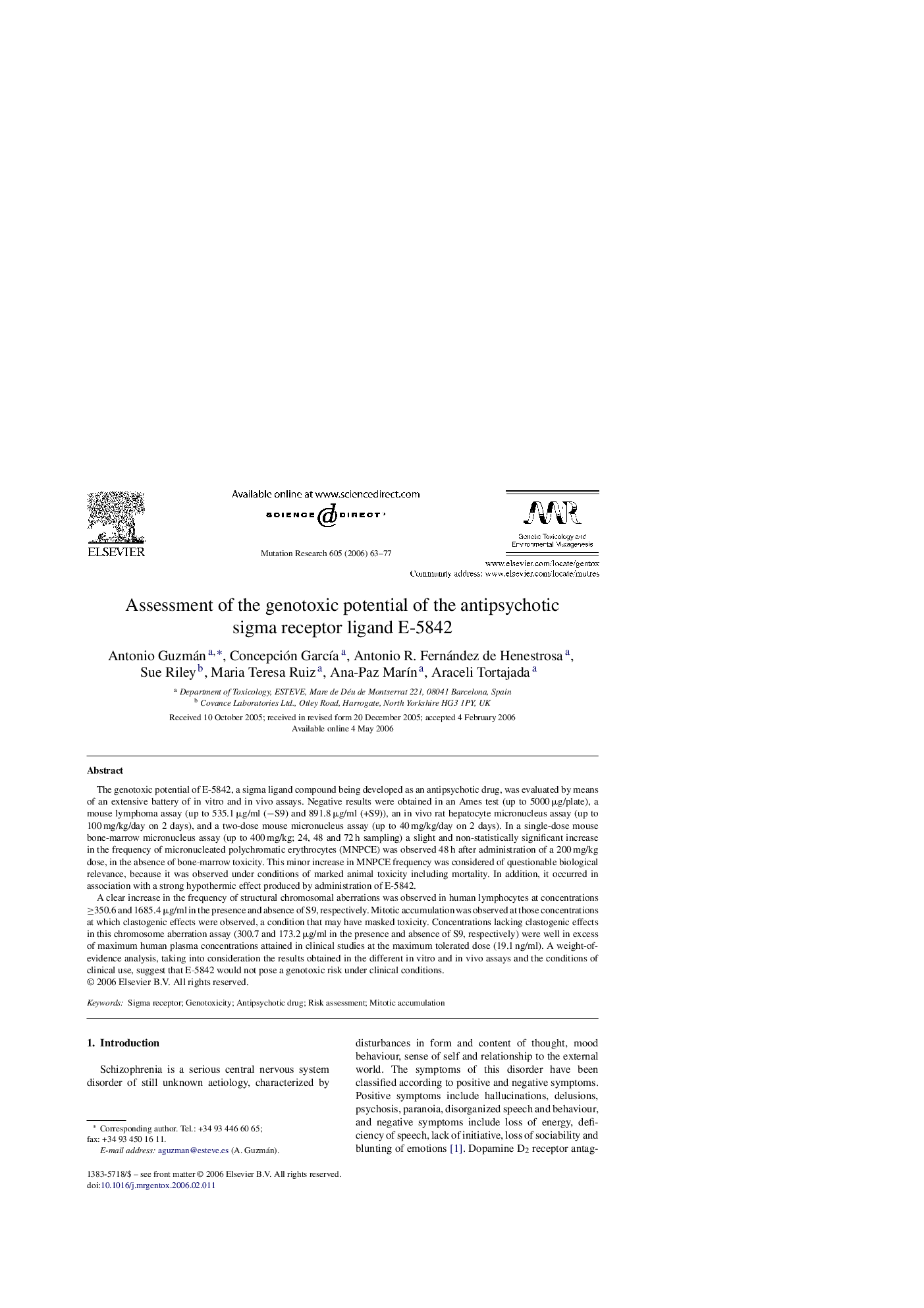| کد مقاله | کد نشریه | سال انتشار | مقاله انگلیسی | نسخه تمام متن |
|---|---|---|---|---|
| 2149373 | 1548645 | 2006 | 15 صفحه PDF | دانلود رایگان |

The genotoxic potential of E-5842, a sigma ligand compound being developed as an antipsychotic drug, was evaluated by means of an extensive battery of in vitro and in vivo assays. Negative results were obtained in an Ames test (up to 5000 μg/plate), a mouse lymphoma assay (up to 535.1 μg/ml (−S9) and 891.8 μg/ml (+S9)), an in vivo rat hepatocyte micronucleus assay (up to 100 mg/kg/day on 2 days), and a two-dose mouse micronucleus assay (up to 40 mg/kg/day on 2 days). In a single-dose mouse bone-marrow micronucleus assay (up to 400 mg/kg; 24, 48 and 72 h sampling) a slight and non-statistically significant increase in the frequency of micronucleated polychromatic erythrocytes (MNPCE) was observed 48 h after administration of a 200 mg/kg dose, in the absence of bone-marrow toxicity. This minor increase in MNPCE frequency was considered of questionable biological relevance, because it was observed under conditions of marked animal toxicity including mortality. In addition, it occurred in association with a strong hypothermic effect produced by administration of E-5842.A clear increase in the frequency of structural chromosomal aberrations was observed in human lymphocytes at concentrations ≥350.6 and 1685.4 μg/ml in the presence and absence of S9, respectively. Mitotic accumulation was observed at those concentrations at which clastogenic effects were observed, a condition that may have masked toxicity. Concentrations lacking clastogenic effects in this chromosome aberration assay (300.7 and 173.2 μg/ml in the presence and absence of S9, respectively) were well in excess of maximum human plasma concentrations attained in clinical studies at the maximum tolerated dose (19.1 ng/ml). A weight-of-evidence analysis, taking into consideration the results obtained in the different in vitro and in vivo assays and the conditions of clinical use, suggest that E-5842 would not pose a genotoxic risk under clinical conditions.
Journal: Mutation Research/Genetic Toxicology and Environmental Mutagenesis - Volume 605, Issues 1–2, 16 June 2006, Pages 63–77